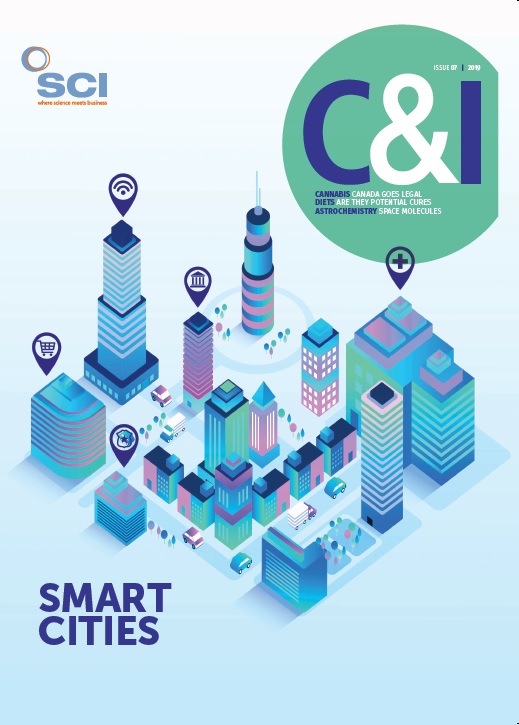The human body is not well adapted for life beyond the Earth’s atmosphere. Without exercise, astronauts can lose 20% of muscle mass in a space flight lasting just five to 11 days, while bone density is depleted at a rate of 1-2% a month, according to Ruth Globus of Nasa’s Ames Research Center in CA, US.
‘Space is a rapid accelerator of human ageing on Earth,’ says Yaky Yanay, CEO of Israeli biotech Pluristem. ‘During space flight astronauts can experience muscle loss and exposure to higher levels of ionising radiation and we have products that target both those conditions.’
In February 2019, the company announced a collaboration with Nasa Ames to investigate whether Pluristem’s stem cells - derived from human placenta - could help to prevent and treat some of the effects of space flight – something that will be especially important for future long duration space missions, Yanay says.
The first results from the Nasa collaboration - involving terrestrial microgravity simulators in animals – won’t be available until later in 2019. However, Yanay notes that a Phase 2 study of patients injected with Pluristem’s PLX-PAD cells after total hip replacement surgery recently found up to 500 times improvement in muscle strength and up to 300 times improvement in muscle volume. ‘Some patients came out better than baseline,’ he says; in other words, their muscle mass was better six months after the operation than before they had surgery - with a ‘significant improvement’ also seen in the non–operated leg.
Pluristem’s PLX-18 cells, meanwhile – another placenta derived product – have also been demonstrated to regenerate bone marrow activity to produce blood cells in Phase 1 and 2 equivalent studies. Mice injected with PLX-18 cells were reported to be more than twice as likely to survive exposure to 14Gray of ionising radiation, known to be a big problem in space. Above Earth’s protective magnetic field, Nasa reports that astronauts on the ISS are exposed to 10x higher radiation than on Earth, which increases cancer risks, can damage the CNS and alter cognitive function, reduce motor function and prompt behavioural changes.
Potential applications for PLX therapies are huge, Yanay points out. ‘Every week I get a call from a doctor asking me to a do a clinical trial,’ he says, adding that Pluristem has recently reported an anti-proliferative or inhibitory effect on various cancer cell lines treated with PLX Immune cells (Scientific Reports, doi: 10.1038/ s41598-017-18428-1). He believes ‘45% of all cancer cell types could be responsive to some form of PLX therapy’.
Pluristem’s PLX-R18 cells have both an Investigational New Drug application (IND) and an orphan drug designation for the treatment of acute radiation syndrome (ARS), while PLX-PAD cells have been given the green light by the US FDA expanded access program for treating patients with Critical Limb Ischemia (CLI), who may otherwise require limb amputations but are not suitable to participate in the company’s ongoing Phase 3 study. These cells are also in Phase 3 trials in the US, Israel and Europe for the treatment of muscle regeneration following hip fracture surgery, part of the EU Horizon 2020 funded Hipgen project.
As for future pricing of its cell therapies, Yanay says PLuristem plans to ‘charge a lot less than the current healthcare costs for the relevant disease’. With its CLI therapy, for example, expected to come to the European market in Q2 2020, he points out that the current costs for these patients is roughly $90,000.
One thing that has ‘changed markedly’ in recent years is the regulatory attitude towards regenerative medicines, he says: ‘In fact, the regulators are now encouraging us with expedited paths to market.’ Pluristem has been selected for several regulatory pathways around the world, advancing its cell therapies towards marketing.
To date, Yanay estimates Pluristem has invested around $250m on its PLX technology. ‘Current pricing of regenerative medicines makes no sense,’ he says. ‘We’ve already shown we can save 60% of healthcare costs associated with CLI and believe we can do the same for muscle regeneration.’
Pluristem’s PLX cells are derived from placenta tissue collected from a hospitals in Haifa (Israel) after full term delivery of a healthy baby. The company’s proprietary cell expansion bioreactor system has the ability to produce treatments for over 20,000 patients from just a single placenta, which can be administered to patients off the shelf – without the need for tissue matching





